Best solid state amps 2025: Our amp picks for those who play, dirty, clean, or anything in between
Save your back and your wallet with the best solid state amps from the likes of Fender, Boss, Yamaha and more
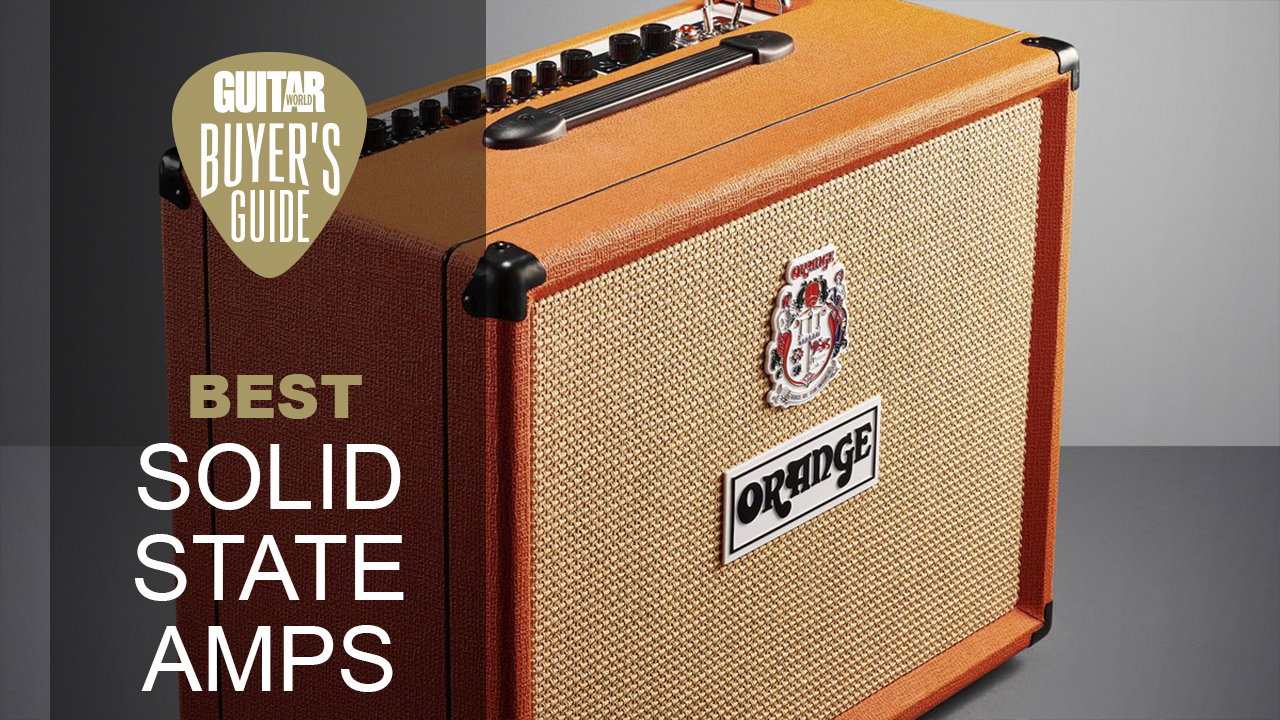
Want to forgo the fragility, cost and weight associated with dusty old tube amps? Then I'd recommend you delve deep into the world of the best solid state amps. From modern modelling to old-school, analog designs, my pick of solid states can cover a really wide range of sounds and tempt even the most die-hard tube-lovers.
Tube amps aren’t necessarily always the answer to getting great tone. Solid state amps boast many advantages: they’re generally lighter, more affordable and often have a tonne of clean headroom. They’re built in all sorts of different sizes ranging from tiny bedroom practice amps to stage-ready beasts that will shake the venue walls.
You’ll find many useful features on the best solid state amps too. Headphone outputs, auxiliary inputs – even Bluetooth on some – can make them supremely practical in a number of scenarios.
Here’s my pick from a range of brands and covering all budgets. If you want to know my best pick overall, head straight for the Fender Tone Master Deluxe Reverb. In my opinion it's the best tube amp-alternative you can buy right now and it looks and sounds just like the real thing.
The quick list
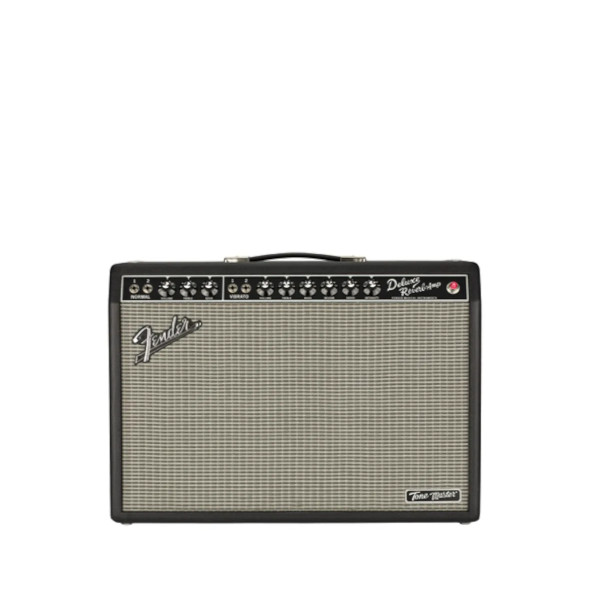
In my opinion, you simply can't go wrong with the Fender Tone Master Deluxe Reverb. It's half the price and weight of the 65 Deluxe Reverb and sounds almost identical, although this model adds an attenuator dial alongside an XLR out. It's an excellent and robust option.
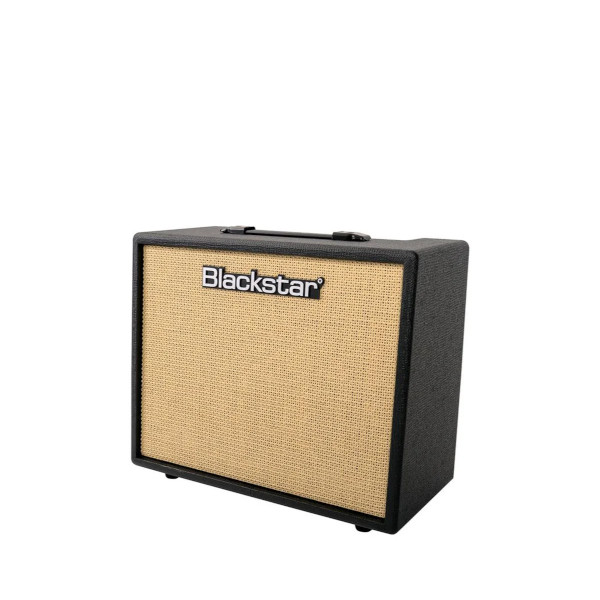
If you're on a budget but still want a great solid state amp, then look no further than the Blackstar Debut 50R. You won't find much in the way of bells and whistles, but it's a powerful performer and the MOSFET preamp section has been tested to ensure it sounds as close to a tube amp as possible.
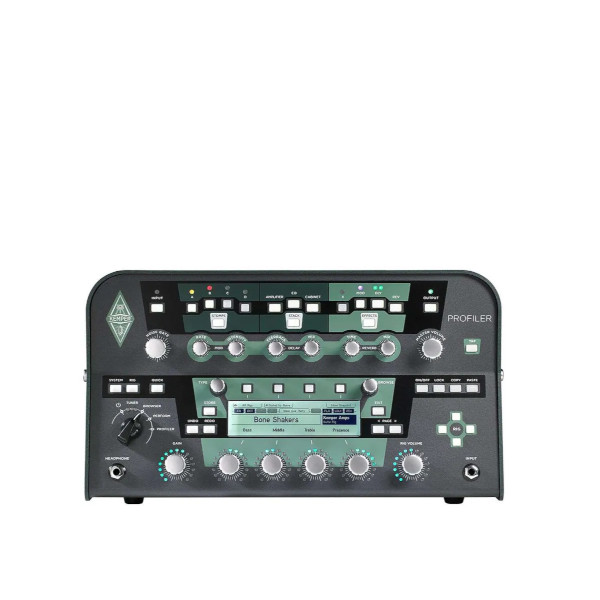
The price might put some off, but what you get for your money is a versatile, lightweight Kemper solid state amp that enables you to create your own profiles by recording your amp collection - and there are hundreds of pre-installed profiles too. The unit also includes a 600-watt Class D power amp.
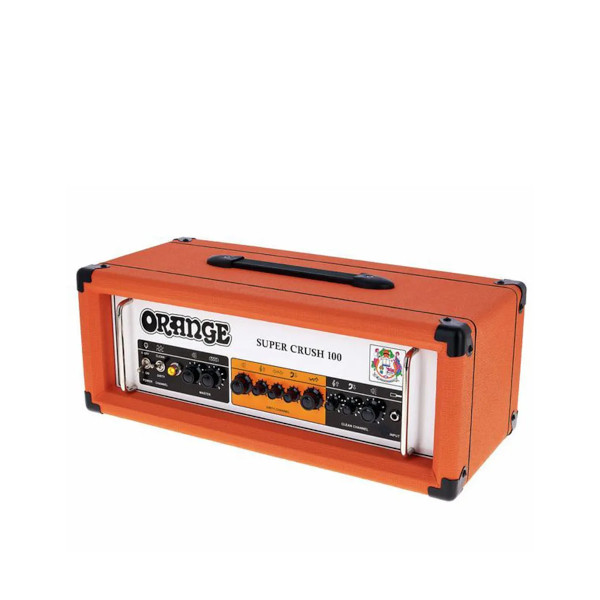
With its wide range of tones and classic, robust Orange build quality, metalheads looking for a new amp should begin their journey right here with the Super Crush 100. It's best suited for a live environment and hits the spot with high gain tone and huge volumes. A beast of an amp.
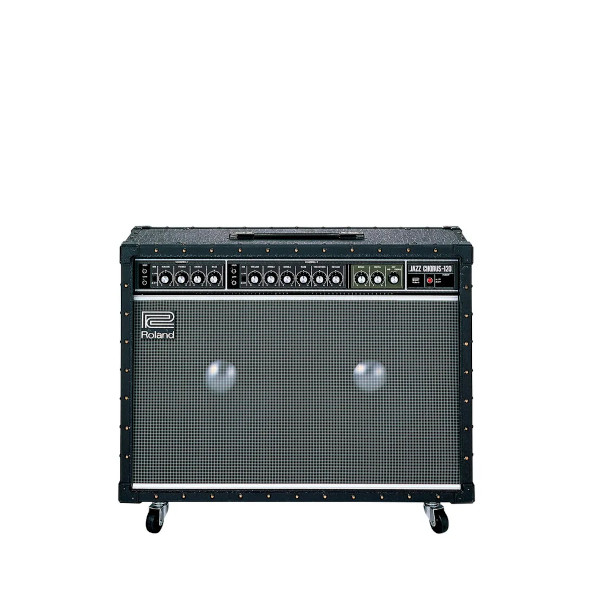
The Roland Jazz Chorus-120 (JC-120) is one heavy bit of kit but it cuts through any mix with laser-like precision. The Dimensional Space Chorus effect is simply awesome and allows you bask in the glory of lush sonic textures. It takes pedals very well indeed, making this a versatile gigging giant.
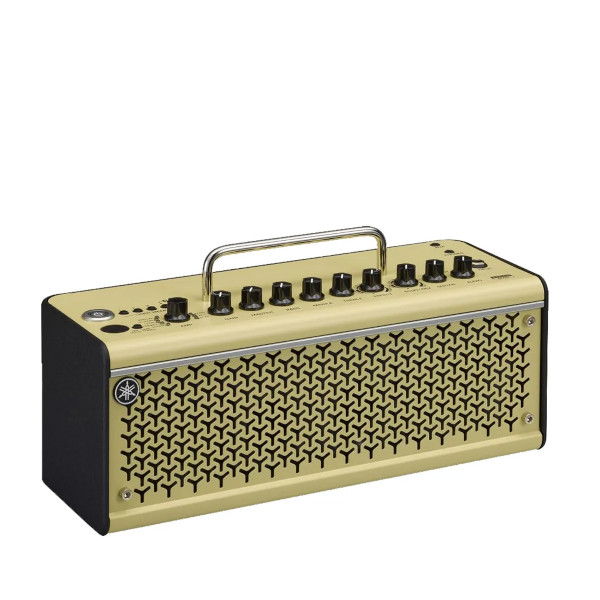
The THR10II is only slightly less powerful than the THR3011 but boasts all of the magical tone shaping features for a lot less money. You get 15 guitar amp models, a trio of bass amp models, thee mic models alongside three flat voicings for keyboards, synths and vocals, making this a wonderful practice amp.
Best overall

Specifications
Reasons to buy
Reasons to avoid
✅ Buy if you want an amp that's half the weight and price of the ’65 reissue: This performs so well that it's not easy telling the difference between the two models.
❌ Avoid if you want to add effect loops: No joy if this is high on your feature list.
Build quality rating: ★★★★½
Usability rating: ★★★★
Sounds rating: ★★★★½
Overall: ★★★★½
It’s a real dilemma isn’t it? You’ve just saved yourself a good chunk of change and can’t wait to invest in a classic Fender amp. You’ve always fancied a Deluxe Reverb, so which one do you go for? The ’65 reissue, with its 12AX7/12AT7 preamp tubes, 6V6 power amp tubes and a 12” Jensen speaker or the Tone Master solid state replica with its superb, modeled tones and a 12” Jensen speaker?
In my opinion, you can’t go wrong with either but let’s hear it for the Tone Master version. It’s pretty much identical in appearance and size to the original, if it weren’t for the giveaway Tone Master badge on the silver grille cloth, most people wouldn’t be able to tell the difference. Pick it up though and you’ll immediately notice that its weight is about half that of a ’65 Deluxe Reverb, which is a good thing.
The feature-set is almost the same too, but with two game-changing additions. Firstly, an attenuator dial enables you to lower the output power in five stages from 22-watts right down to 0.2-watts. Then there’s the XLR out, with a cab sim switch that lets you choose between flat or two mic IRs, an SM57 or a ribbon.
Just like its namesake, this is an amp with so much headroom that it needs to be wound up in order to access those iconic saturated tones. Unlike its namesake though, the attenuator feature allows you to do this at home at sociable volume levels. Similarly, the XLR out is a very welcome recording feature that some will choose to use on stage too.
Does it sound identical? Yes, it’s incredibly close – even experts would be hard-pressed to tell the difference. What’s more, that sound will be consistent day in, day out, with no degrading valves to worry about.
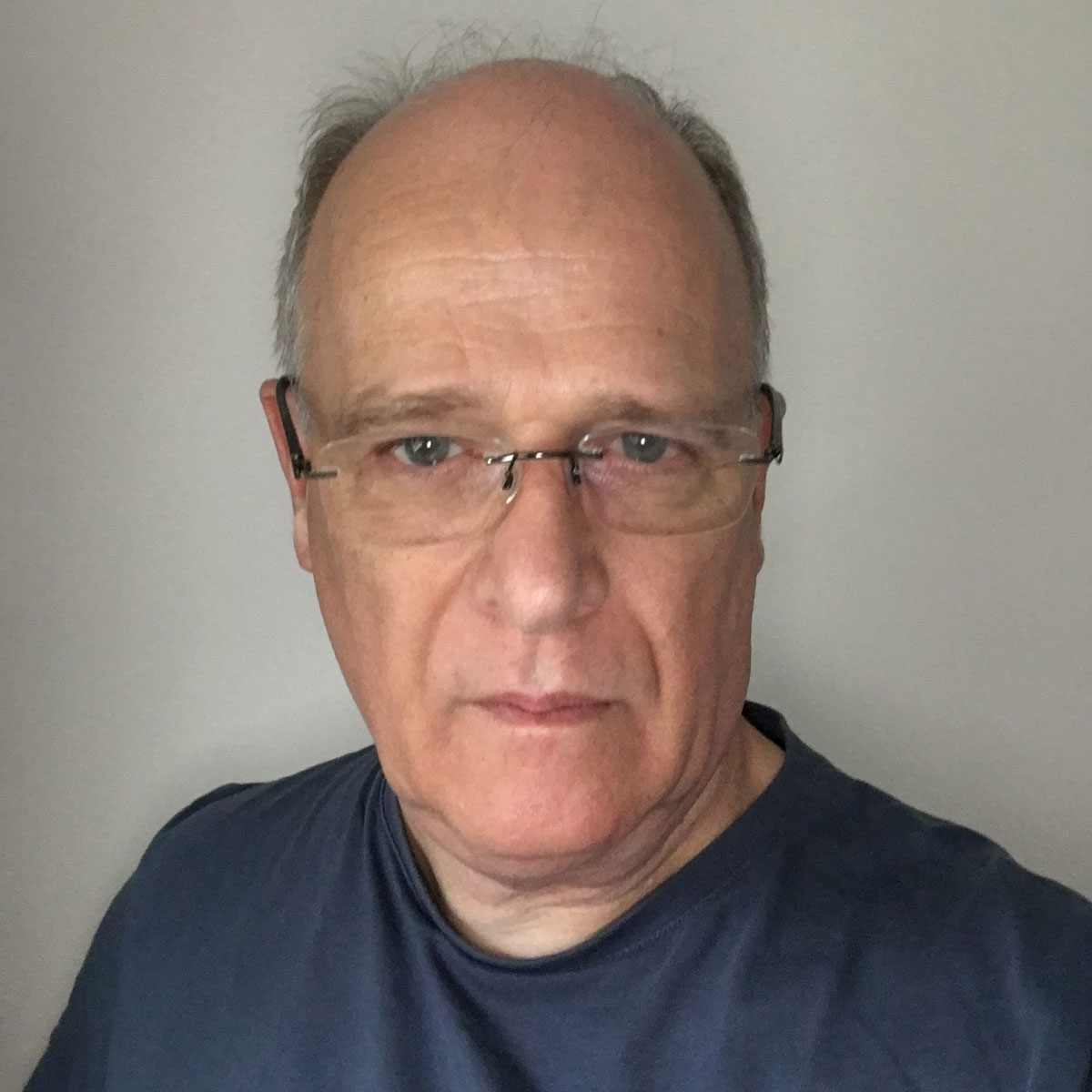
"If you’re a gigging player who wants the style and punch of a black-panel Deluxe without the weight, this is definitely worth a listen."
Read more: Fender Tone Master Deluxe Reverb review
Best value
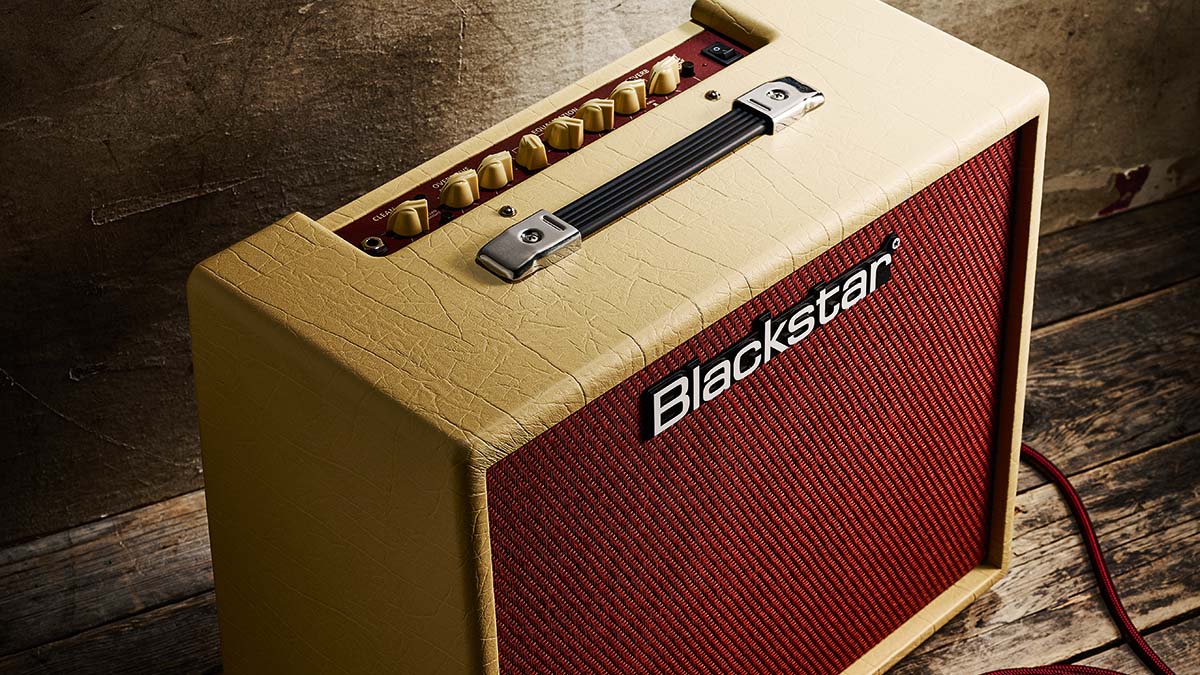
2. Blackstar Debut 50R
Our expert review:
Specifications
Reasons to buy
Reasons to avoid
✅ Buy if you want great amp on a budget: This stripped-back amp might not offer a bunch of extra features, but it more than delivers when it comes to its audio.
❌ Avoid if you want those extra bells and whistles: If you have a bit more money to spend, you may want something more substantial.
Build quality rating: ★★★★★
Usability rating: ★★★★
Sounds rating: ★★★★½
Overall: ★★★★
The Blackstar Debut 50R ditched the bells, whistles and unnecessary complexities many of its rivals use on their amplifiers, instead offering a straight up 50 Watt, MOSFET-driven, totally analog beast. For purists who simply want to plug and play without the faff, this is the solution for you.
The MOSFET preamp section has been painstakingly tested to ensure it reacts and sounds as close to a tube amplifier as possible, even when the amp is switched to its 5W mode, giving great warm tones at bedroom-friendly volumes. Blackstar’s patented ‘ISF’ knob takes the tone from ‘American’ to ‘British’, making it impressively versatile.
The addition of a switchable plate/hall reverb is welcome, and the effects loop on the rear makes adding further time-based effects sleek and easy. An additional footswitch can be purchased to change either the channel or the reverb on/off which makes it a great option for smaller gigs, and given they come in a handsome range of different colors, you’ll be keen to show it off in front of people. All in all, this is a really smart little amp, that goes for tone over gimmicks, and sits at a price point that should appeal to all players.

"The clincher here is surely the Debut 50R’s asking price. For under $250, all this can be yours, making Blackstar’s runner practically a dead cert in the race to become this year’s best-selling small combo."
Read more: Blackstar Debut 50R review
Best head
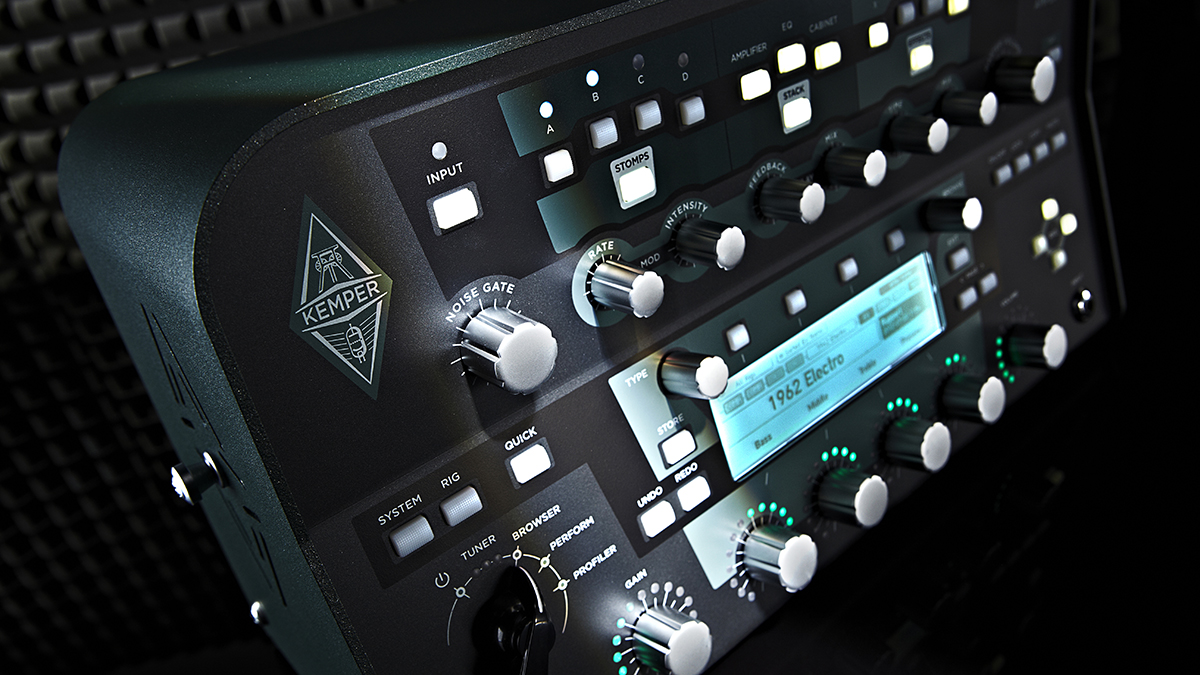
3. Kemper Profiler PowerHead
Our expert review:
Specifications
Reasons to buy
Reasons to avoid
✅ Buy if you want a lightweight and versatile amp: With hundreds of pre-installed profiles and a 600-watt Class D power amp, this is top amp option.
❌ Avoid if money is tight: This is an expensive bit of kit that could also overwhelm newer players.
Build quality rating: ★★★★
Usability rating: ★★★★
Sounds rating: ★★★★★
Overall: ★★★★
Unlike many of the modeling amps I've included in this guide, the Profiler PowerHead enables you to create your own profiles by recording (profiling) your existing collection of amps. Want to take your original Fender Blackface Twin away with you in a convenient, reliable package? No problem, you can profile it in minutes.
Don’t have any boutique or vintage tube amps to profile? No worries, all Kemper products ship with hundreds of top-drawer profiles already installed.
What makes the PowerHead (and its rack-based equivalent) unique is that, as the name suggests, this unit includes a 600-watt Class D power amp. Most Kemper profilers need to be hooked up to a powered speaker or PA system, but the PowerHead can be teamed up with pretty much any speaker cab provided that power and impedance guidelines are followed.
Why bother? Well, to get the best guitar tones possible by injecting some authenticity back into your modelled signal chain. Kemper has even developed its own Kemper Kabinet fitted with Kemper Kone speakers that it says renders guitar sounds in a far more distinctly guitar-cab way than any PA or monitor speaker ever can.
Of course, you can switch off the built-in power amp if you want to, making your PowerHead a line-level device that can be plugged directly into a PA, desk or other recording device.
Best for metal
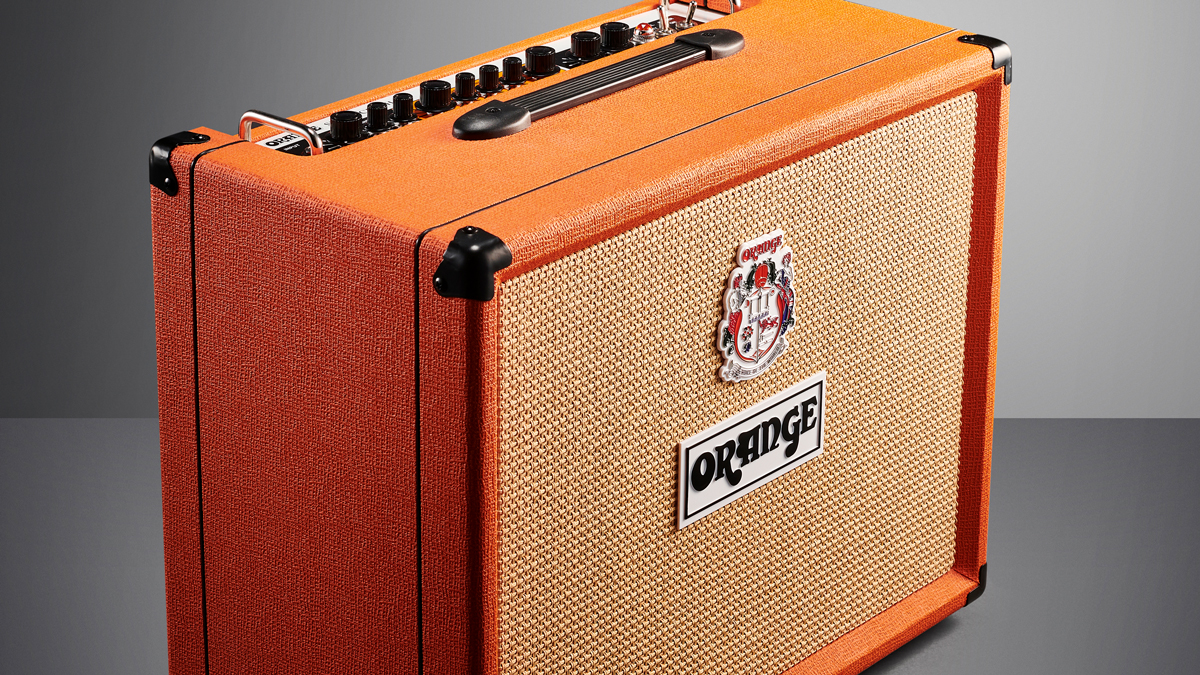
Specifications
Reasons to buy
Reasons to avoid
✅ Buy if you want a gigging amp that caters for shredders: The Orange Super Crush 100 is at its best in a live setting and will cut through the crowd thanks to its high gain and massive sound.
❌ Avoid if you want a more traditional amp: The pic-only control panel does take a bit of getting used to.
Build quality rating: ★★★★½
Usability rating: ★★★★
Sounds rating: ★★★★½
Overall: ★★★★½
Based around a 2 channel, JFET preamp design and 100 W Class A/B power amp, the Super Crush 100 is designed to mimic Orange’s flagship Rockerverb guitar head and comes in both a head or combo format. Offering classic, high gain Orange tone, with a solid amount of headroom to get chimey clean tones too.
With cab-sim out the Super Crush definitely has features that make it useable as a home amplifier which can’t really be said of its tube counterpart, the Rockerverb - but this is undoubtedly an amplifier for the live environment.
It provides a brilliant option for players searching for high gain tone and ample volumes, without having to rely on a temperamental tube amplifier across a string of tour dates.
This is about a quarter or the price of an equivalent Rockerverb head. Is it a quarter of an amp? Heck no! While aficionados may notice the difference, the average gig-goer is just going to notice how huge this sounds.

"A nicely priced, gig-ready combo from the iconic British company that does an excellent job of squeezing tube-like tones from a solid-state design."
Read more: Orange Super Crush 100 review
Best for pedals
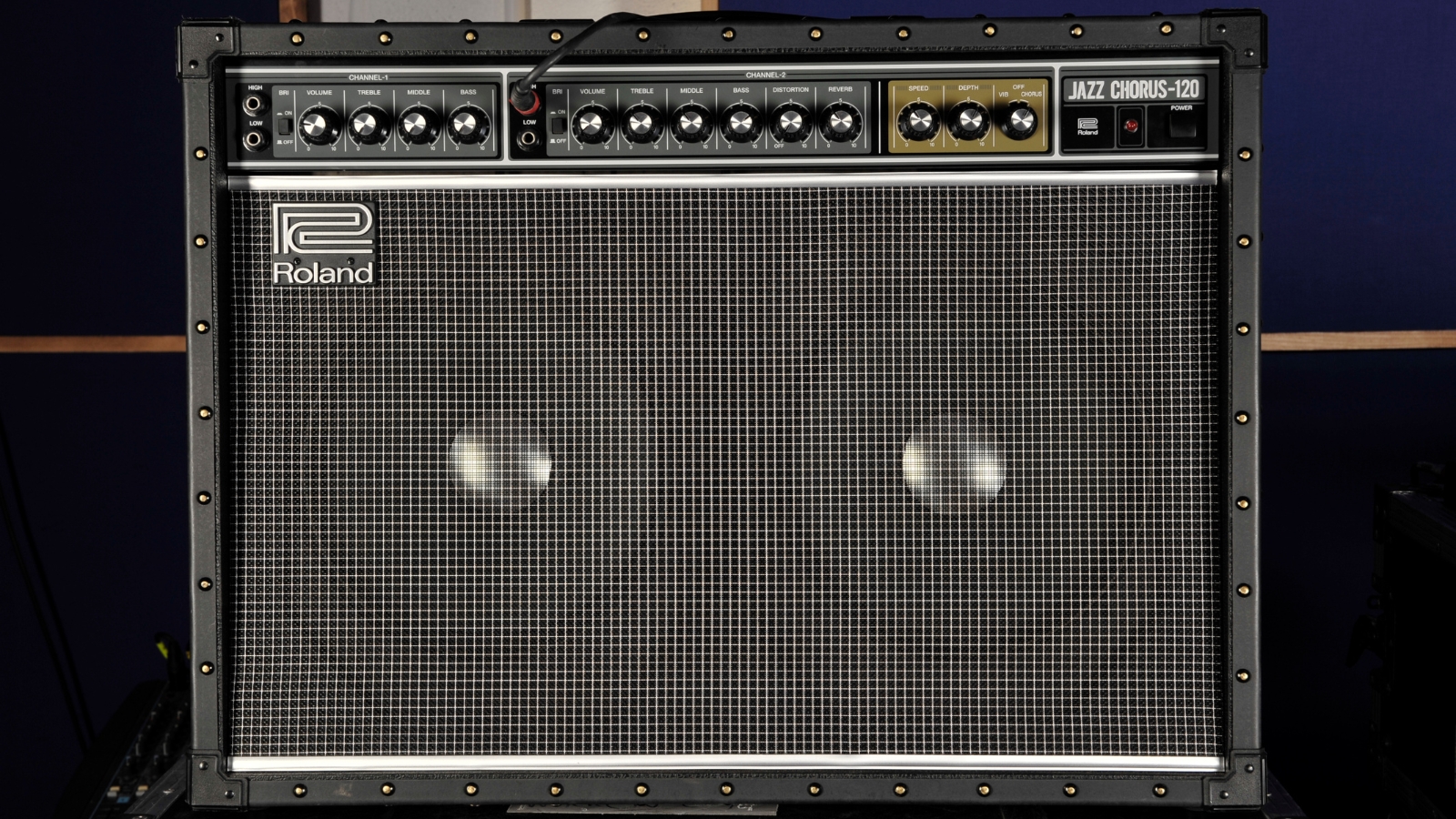
5. Roland Jazz Chorus-120 (JC-120)
Our expert review:
Specifications
Reasons to buy
Reasons to avoid
✅ Buy if you want heavy and robust bit of kit with awesome chorus: Here's a solid state amp that'll handle life on the road no problem.
❌ Avoid if you want to steer clear of distortion: The distortion in the Roland Jazz Chorus-120 is a little on the harsh side.
Build quality rating: ★★★★★
Usability rating: ★★★★★
Sounds rating: ★★★★½
Overall: ★★★★½
I just had to include this amp in this buyer’s guide as it’s the godfather of solid-state guitar cleans and an amp that’ll cut through any mix with laser-like precision. An absolute icon of late ’70s/early ’80s guitar tone.
Oddly enough, it does have a distortion setting but I suggest you leave it well alone – it sounds a bit harsh – and instead turn your attention to the legendary Dimensional Space Chorus effect with some reverb dialled in. Play some extended chords, stick your head between the 12” stereo speakers and lap up the gorgeously lush sonic textures. Then repeat.
If you do ever get tired of that sweet otherworldly sound you’ll be pleased to learn that the JC-120 takes pedals exceptionally well, including distortion. So, with the right pedalboard it can be the backbone of quite a versatile rig.
The JC-120 is also known for being exceptionally loud and very heavy, so you may want to consider the smaller, yet gig-able JC-40, or even the JC-22. You’ll lose out on the stereo separation though, which would be a tragedy.
Mark Knopfler, Dimebag Darrell, Joe Satriani, Adrian Belew, Andy Summers, Robert Smith, Billy Duffy, Johnny Marr, James Hetfield, Ernest Ranglin – they can’t all be wrong…
Best practice
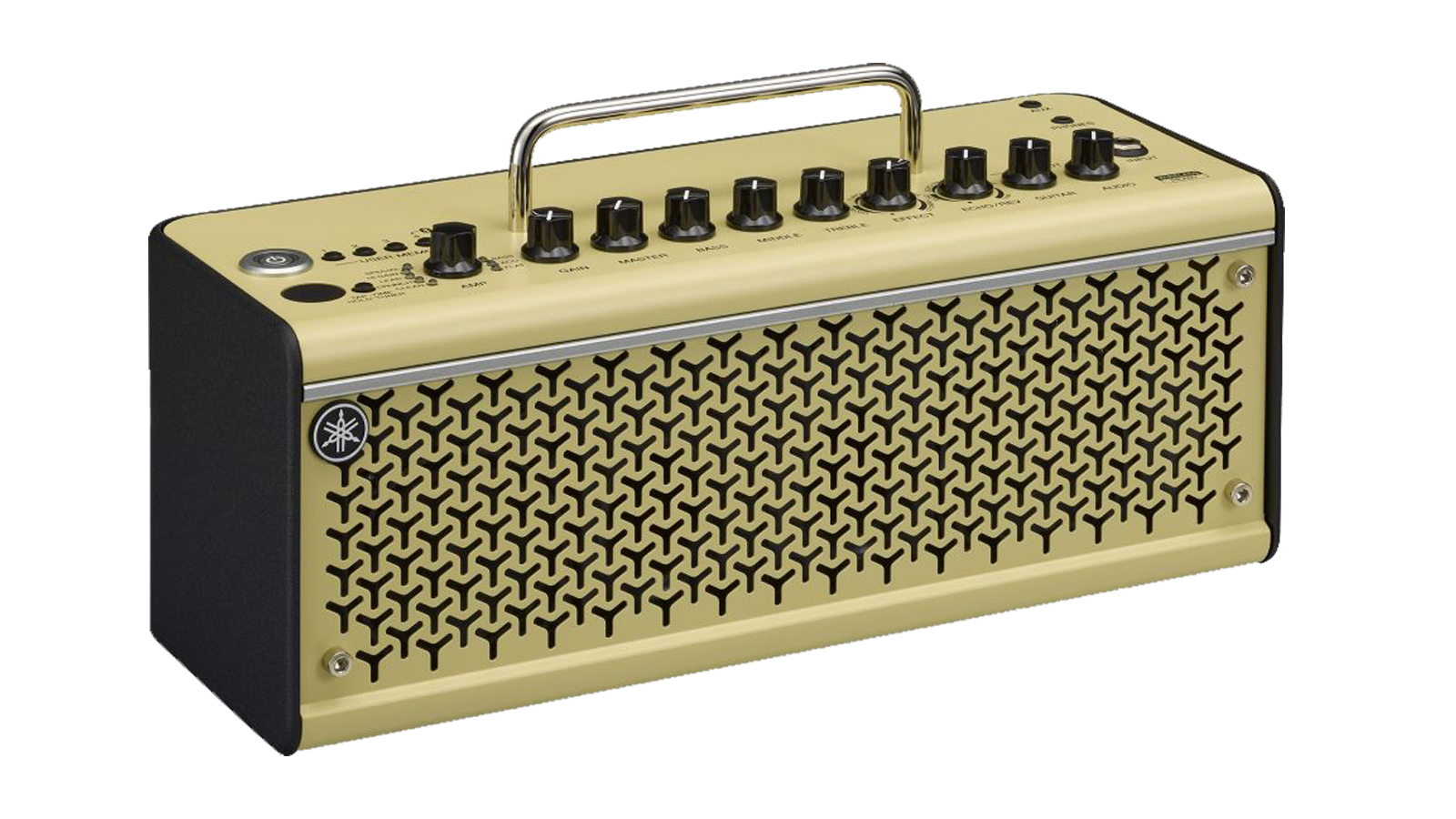
6. Yamaha THR10II
Our expert review:
Specifications
Reasons to buy
Reasons to avoid
✅ Buy if you want a desktop practice amp that shines: This is a flexible amp that is perfectly suited for practicing, no matter where you are.
❌ Avoid if you want something a bit more robust: The THR10II is great but if you extra oomph, take a look at the Yamaha THR3011.
Build quality rating: ★★★★★
Usability rating: ★★★★★
Sounds rating: ★★★★½
Overall: ★★★★★
Small practice amps have been around for longer than we care to remember, but until Yamaha completely reinvented this popular product group, few were worth listening to.
Yamaha’s engineers questioned why guitarists would want to plug in to an ugly, scaled down version of a traditional stack or combo, fitted with an ill-sounding, cheap speaker, when they could be using something specifically designed to do the job better. The result was an amp that looks great, and thanks to modern audio entertainment tech, sounds simply stunning too.
Now on version two, the THR series has plenty of competitors, but for many of us it still retains its crown as the best desktop amp line. Invariably, most of the love is aimed at the range-topping 30-watt THR30II Wireless, but with an RRP of $869 / £651 / €771, it’s simply out of reach for most guitarists.
The THR10II is only slightly less powerful and boasts all of the magical tone shaping features for a lot less money. You still get 15 guitar amp models, three bass amp models, three mic models for acoustic-electrics and three flat voicings for keyboards, synths and vocals. There’s a suite of FX, Bluetooth for audio playback and USB for recording via your DAW.
There are no line outs, but then most of us won’t be playing live with our THR anyway. On the face of it, the lack of built-in wireless capability is more of an issue, though you can always add a Line 6 Relay G10 later. Sadly, it’s the one amp in the THR range without a rechargeable battery, so you will have to plug it into the mains.
The THR10II looks smart enough to grace the most elegant home, its traditional control panel is a doddle to use, the models are superb and the extended stereo speaker system, which was designed by Yamaha’s Audio Visual Division, sounds sublime.
Best for effects
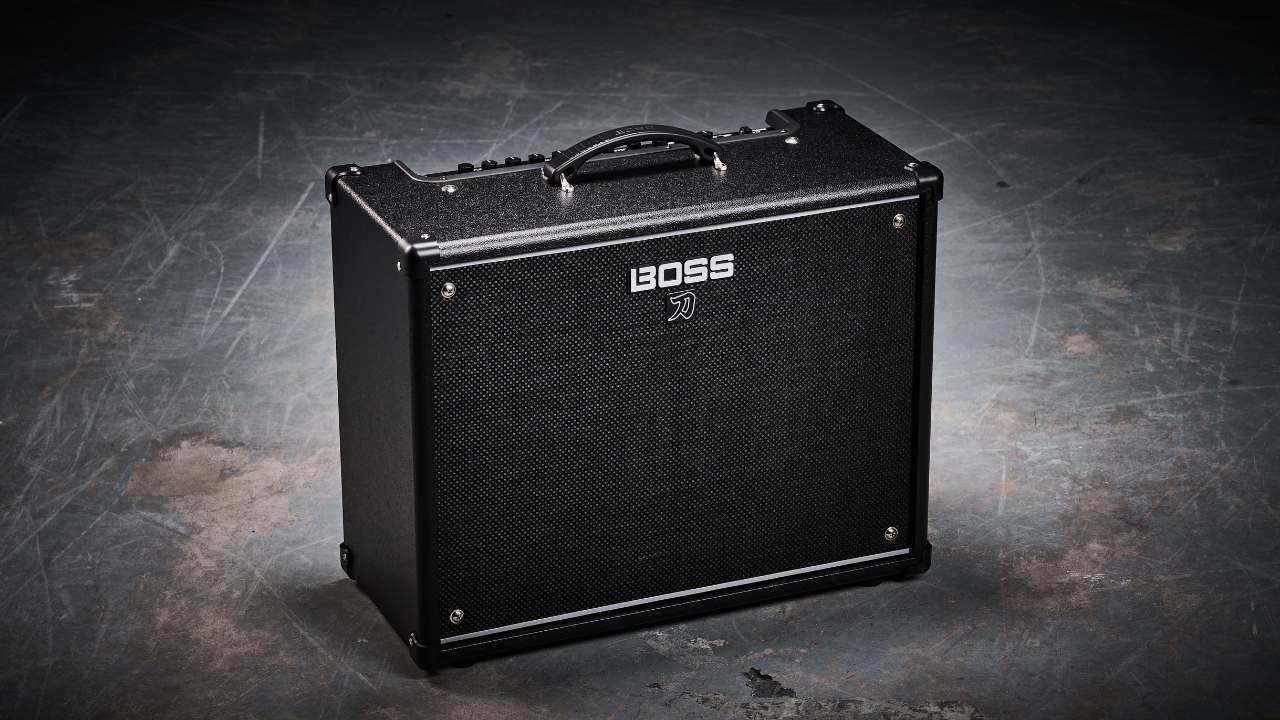
7. Boss Katana 100 Gen 3
Our expert review:
Specifications
Reasons to buy
Reasons to avoid
✅ Buy if you want excellent internal effects: You can even expand the choice with the Tone Studio Editor.
❌ Avoid if you want Bluetooth out of the box: You'll have to grab a Boss BT-DUAL adapter if you want the power of Bluetooth.
Build quality rating: ★★★★
Usability rating: ★★★★½
Sounds rating: ★★★★½
Overall: ★★★★½
The Katana range ripped up the market when it was first unsheathed, and the latest Gen 3 version has only improved on the already brilliant formula. Introducing an additional amp model as well as building upon the already great-sounding originals to add more organic nuances, the Katana remains a brilliant solid-state guitar amp.
The 100 Watts of built-in power is more than enough for most gigs - particularly with the helpful addition of a line out on the back to take straight to the PA - although if you’re looking to shift even more air, the 2x12” version is what you’ll want.
As should be expected by the kings of stompboxes, the internal effects are superb and can be expanded further with the use of the Tone Studio Editor application and switched on the fly with the addition of a footswitch.
There’s not really a lot that the Katana can’t do - particularly in this 100W format - and it is no surprise that its arrival will force other manufacturers to up their game yet again. The fact of the matter is that at this price point, not a lot else comes close.
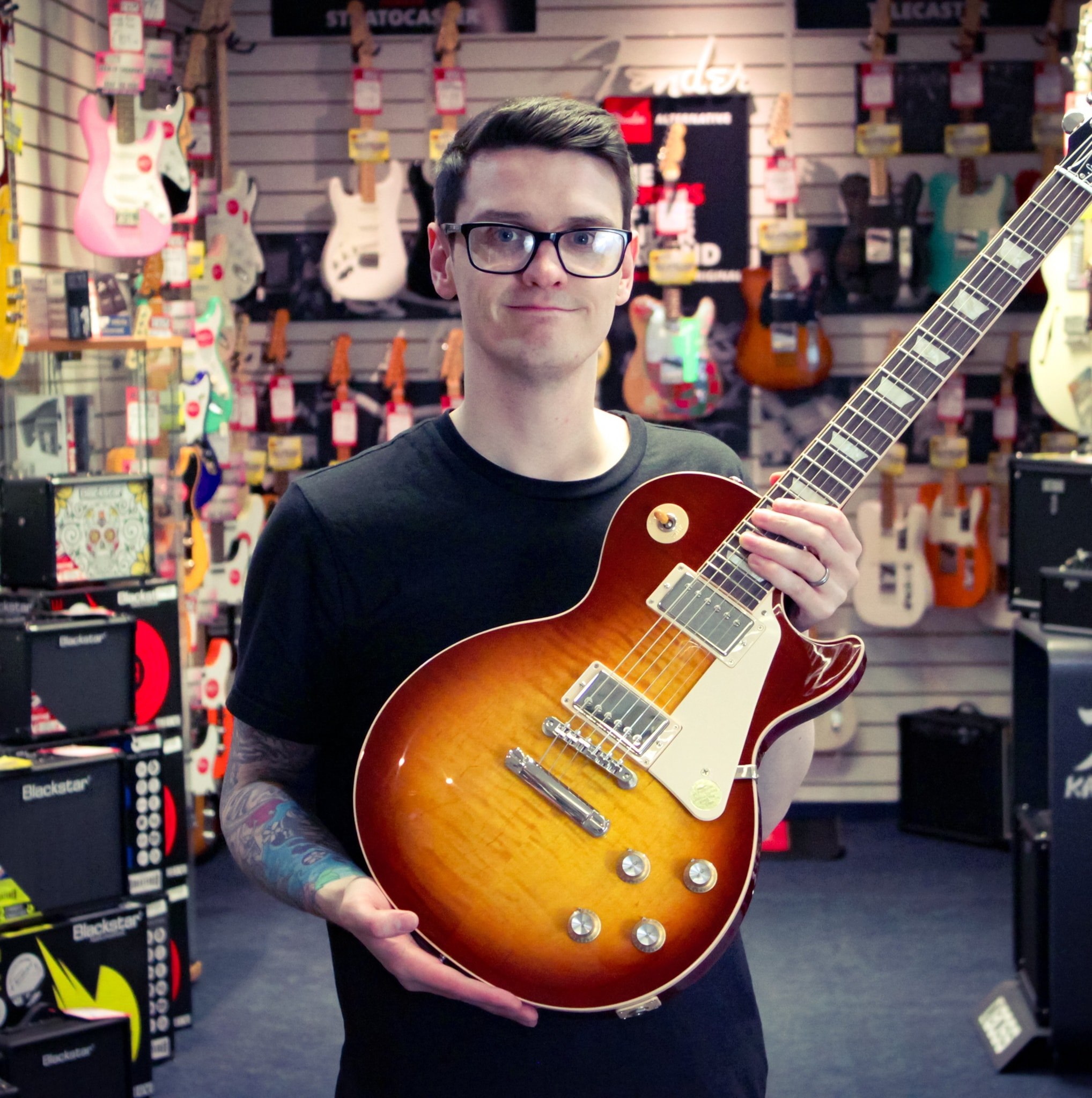
"Boss hasn’t tried to completely reinvent its popular practice amp line – because it didn’t need to. Katana 50 MKIII keeps the same great aesthetic, usability and spirit of the original while pushing the series forward with upgraded tones and functionality."
Read more: Boss Katana 100 Gen 3 review
Best for classic tones
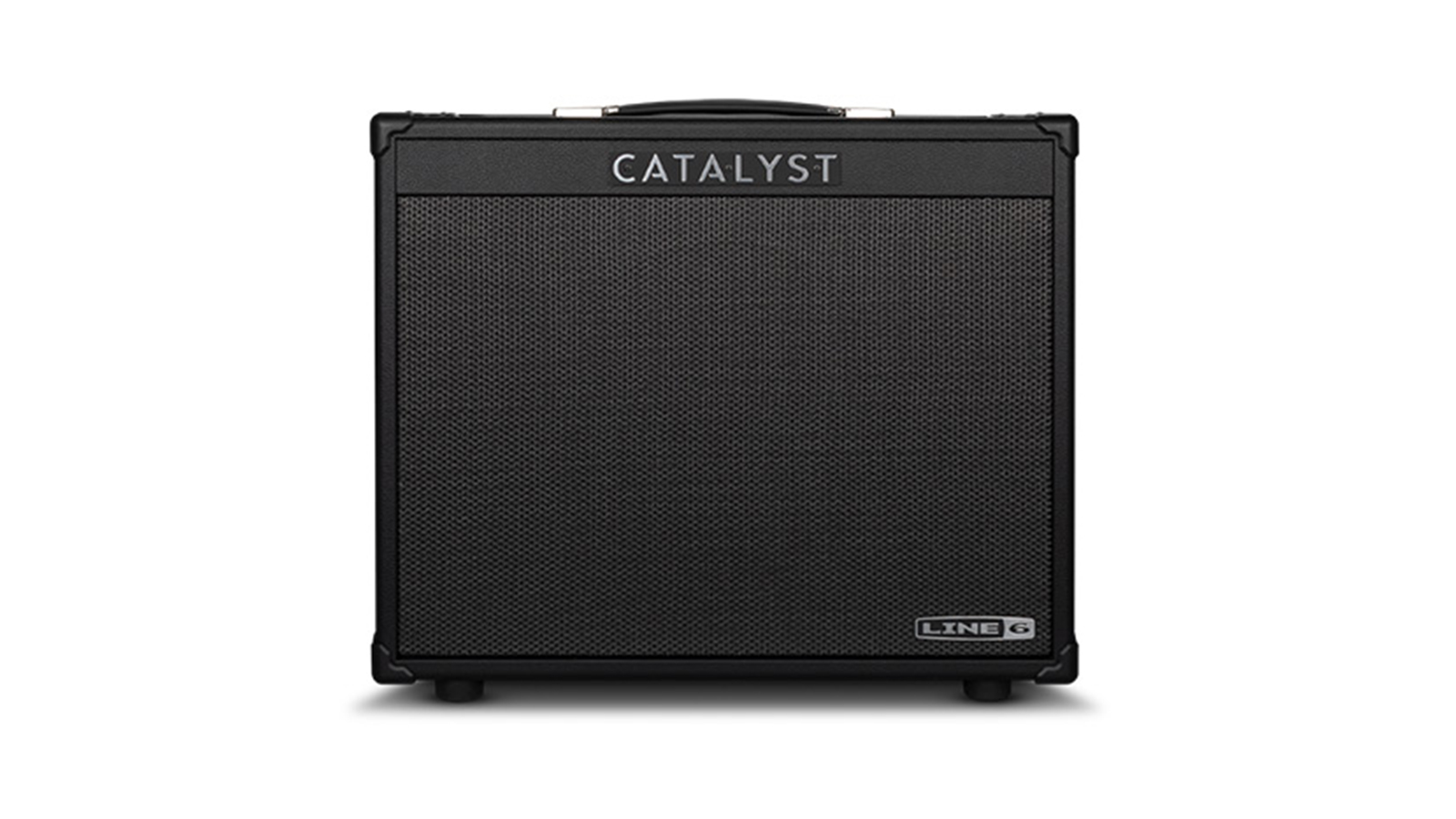
8. Line 6 Catalyst 60
Our expert review:
Specifications
Reasons to buy
Reasons to avoid
✅ Buy if you want classic tones at your fingertips: The Line 6 Catalyst 60 delivers pristine clean tones through to modern high gain making it another versatile amp option.
❌ Avoid if you the full experience straight away: To squeeze the most out of this solid state amp, you'll have to tinker with the app.
Build quality rating: ★★★★
Usability rating: ★★★★
Sounds rating: ★★★★½
Overall: ★★★★
The team behind Line 6’s Helix system are some of the best amp modelling engineers on the planet, and their expertise has been utilized on the Catalyst range to make six Original Amp Designs, which can take you from pristine clean to modern high gain, and everything in between.
Tastefully packed with tech, one particularly cool feature is the ability to use the effects loop as a ‘power amp input’, giving you the opportunity to put an external preamp through its power section, without the typical sag you might get from plugging into a traditional effects loop.
There are also a bundle of effects you can run this amp with, all coming from Line 6’s prestigious Helix effects range – which to buy in pedal format would cost more than this entire amplifier!
While many amps in this price bracket have tried (and failed) to take on the Boss Katana at packing a solid state combo with more gizmos and effects than any normal player would ever need, the Catalyst tries something a little different, keeping things simple and focused on sonic excellence, then garnishing with a selection of great effects. Suffice to say, it’s all the better for taking this route.
Best Marshall

9. Marshall Code 50
Our expert review:
Specifications
Reasons to buy
Reasons to avoid
✅ Buy if you want those classic Marshall vibes: Fill your boots with a range of Marshall tones you know and love.
❌ Avoid if you want an amp full of effects: Only Marshall tones are available through the Code 50, so if you want extra, you'll need to go elsewhere.
Build quality rating: ★★★★★
Usability rating: ★★★★½
Sounds rating: ★★★★½
Overall: ★★★★½
Marshall is one of just a few British amp brands that can truly claim to have revolutionized the sound of rock (Orange and Vox being the others). It has jealously guarded the authenticity of its heritage ‘stack’ tones, initially avoiding modeling amps altogether – possibly because early iterations often had a nasally, ‘angry wasp in a tin can’ quality to them.
That’s not a concern with the Code 50 or its smaller, less powerful sibling, the Code 25. Finally, in 2017, Marshall teamed up with ‘rock & roll scientists’ Softube to co-develop Marshall-Softube (MST) modeling.
The outcome was this duo of amps that feature 14 MST preamps, four MST power amps, eight MST speaker cabinets plus 24 effects including compressor, delays, distortion, chorus, tremolo, flanger, reverb and so on. Essentially, this enables you to recreate tones from legendary amps such as the JTM45, 1962 Bluesbreaker, 1959 Plexi, JCM800 2203 and so on, or mix and match preamps, power amps and cabs to your heart’s content.
I love the fact you can control much of the Core 50’s functionality with its intuitive control panel – it’s just like using a tube amp. Marshall’s Gateway app lets you dive much deeper and stream jam tracks over Bluetooth, but even that is still a cinch to use.
Why the Core 50 over the Core 25? Essentially, they boast the same features, but provided your drummer behaves you’ll be able to gig with the slightly larger, more powerful model.
Best for distortion
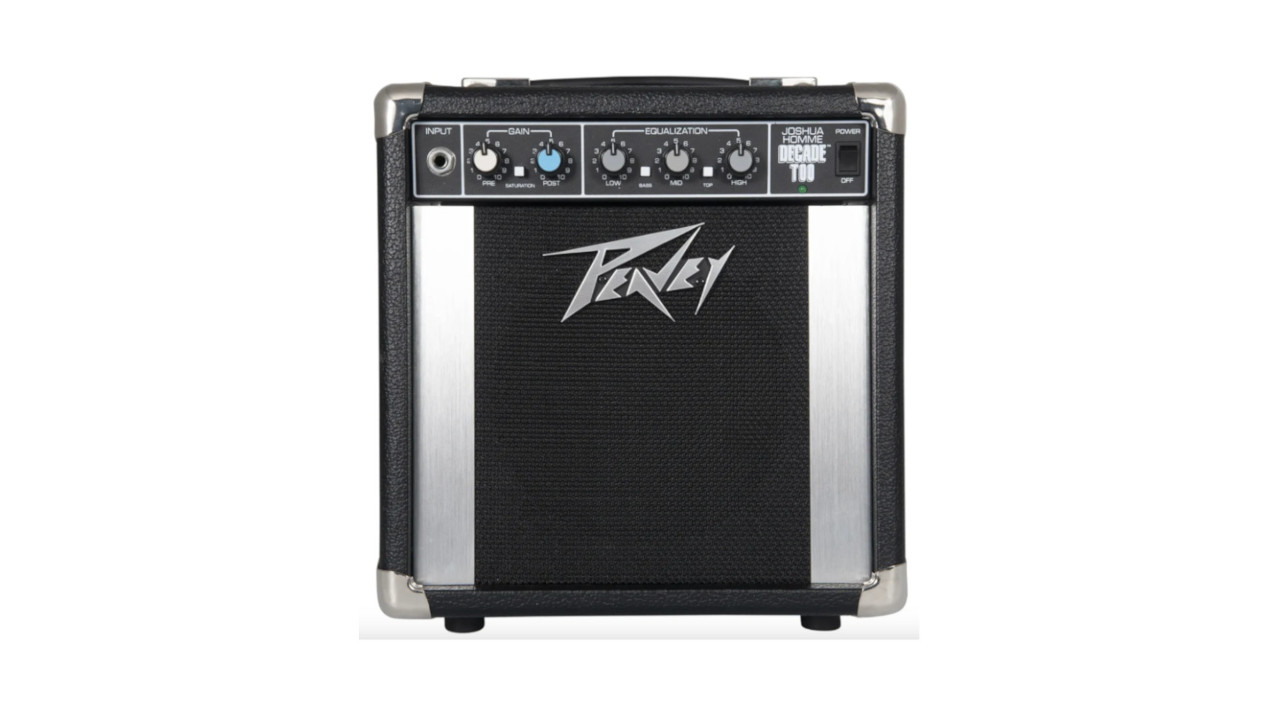
10. Peavey Josh Homme Decade Too
Our expert review:
Specifications
Reasons to buy
Reasons to avoid
✅ Buy if you want to replicate that distinctive QOTSA sound: With Josh Homme's name on it, you can fully expect to get that signature gnarly, fuzzy sounding distortion.
❌ Avoid if you want a fuller sound: I found the distortion levels could get a bit waspish, so if you want a more rounded experience, then look elsewhere.
Build quality rating: ★★★★
Usability rating: ★★★★½
Sounds rating: ★★★★
Overall: ★★★★
After divulging one of his secret weapons in an interview with Mark Ronson, it makes sense that Josh Homme would team up with Peavey to make a signature version of the fabulously retro Decade 10W amplifier.
To be honest, Homme’s Decade Too is an acquired taste, but if you’re a fan of that Queens Of The Stone Age's sound, then it’s great. The Saturation switch adds a ton of gnarly, fuzzy sounding distortion which is great for punchy riffs or single string lead lines. It’s possibly a little too wild for some people's everyday gain sound, but it’s nice to have.
Aside from Josh Homme fans, the Decade Too is actually a great recording tool. If you’ve laid down your main guitar track, this is a handy thing to have around for double tracking.
The 8” speaker makes it a little thin sounding, allowing your second guitar track to sound completely different to your first. It even works well for bass too.
Best lightweight

11. Orange O-Tone 40
Our expert review:
Specifications
Reasons to buy
Reasons to avoid
✅ Buy if you want a light amp to take on your travels: The Orange O-Tone 40 is light, compact and loud making it a neat option for those on the go.
❌ Avoid if you want to crank up the distortion: No distortion here which is fine for some, but others may want to investigate the Peavey Josh Homme Decade Too instead.
Build quality rating: ★★★★½
Usability rating: ★★★★
Sounds rating: ★★★★
Overall: ★★★★
The Orange O-Tone 40 is a new solid state amp that boasts 40W of Class A/B power and has been designed to be small, light and powerful. Despite its compact form, it’s really loud – enough to compete with a noisy rhythm section, making it perfectly giggable.
The O-Tone is a pedal lover’s dream. As you turn the amp up, you do get a little natural compression, but it remains clean, so if you like to get any overdrive via pedals, then they’re really going to shine here. Or, if you want bags of clean headroom then you’ve got that.
The on-board reverb and tremolo are really nice too, with the latter being foots witchable. It’s very easy to dial in, and it’s obviously got the timeless Orange look.
Whether you’re a bedroom player or a touring musician and you’re in need of a nice clean sound, then this thing has you covered.

"The balance of power and convenience here is ideal for the rehearsing/gigging guitar player, and the onboard reverb and tremolo have you covered for a wide range of clean sounds. The O-Tone offers bags of power and punch in a tiny and very portable package."
Read more: Orange O-Tone 40 review
FAQ

Why should I choose a solid state amp?
Despite the association with some high gain tones, an excellent benefit of the solid state amp is their ability to offer spanky cleans at big volumes (wattage dependant); something that only the biggest loudest valve amplifiers can manage, with some even struggling to achieve that at the smallest gigs. For example, if you were looking to run a Vox AC15 with a clean tone in a medium sized venue, you will likely find yourself in crunch town due to the lack of clean headroom. Whereas the extra power of Boss Katana 100W - which sits at nearly half the price - at the same volume should be more than comfortable chiming away.
The Roland Jazz Chorus-120 is amongst the biggest examples of this. Offering super-clean, pristine and piercingly loud tones that was perfect for reggae, funk rhythms and the emerging jazz fusion scene, though, despite its name, not great for warmer, more traditional jazz sounds.
However, the amp’s sparkly tone and distinctive on-board chorus effect also struck a chord with ‘new wave’ guitarists such as Andy Summers, Robert Smith, Billy Duffy and Johnny Marr. Even James Hetfield was a fan, using it extensively on multiple early Metallica albums when cuttingly clean tones were required.
What’s the difference between tube and solid state amps?
For almost all guitarists, solid state amplifiers are probably where you started out, and whilst the trashy little 6”-loaded practice amp that first tried - and probably failed - to channel your sound may have left you wanting more, they are a brilliant place to start for a reason.
Almost always cheaper than their valve counterparts - particularly as there are usually low/no maintenance costs with solid state - and superbly dependable, the solid state amplifier is the trusty launchpad from which rock ‘n’ roll dreams emanate… but that wasn’t always the case.
The vacuum tube, aka valve in the UK, was invented at the turn of the last century as a key component in early amplifiers. It quickly found its way into radios, telephones and public address systems, before eventually finding a home in televisions, record players and guitar amps. Surprisingly, and despite its popularity, it wasn’t every engineer’s favorite bit of kit. Far from it.
You see, tube technology was terribly flawed. A tube needs an enormous amount of power to provide even a modest amount of amplification, it’s fragile, temperamental and comparatively expensive. So, when the transistor was invented in the 1940s there was a collective sigh of relief as engineers everywhere gradually started building a new breed of solid state amplifiers that overcame all their predecessor’s shortcomings.
Funnily enough, the transistor predates both the Telecaster and rock’n’roll, yet we must remember that tube amps were still widespread well into the ’60s when Clapton, Hendrix and others were popularizing saturated driven tones.
Everyone loved this more affordable transistor tech as it began to dominate all manner of amplifiers in the ’70s. Everyone that is except for, you’ve guessed it, guitarists and the odd audiophile.
One reason for this is that tube amps color the guitar’s sound, enveloping it in thick, unctuous layers of warmth, whereas transistors sound more pristine, transparent and, some would argue, characterless. Worse still, a tube amp will exhibit smooth natural compression when driven into harmonic distortion, which is very pleasing to the ear and responsive to dynamic playing.
Solid state guitar amps, on the other hand, have very high headroom, which makes it difficult to drive them into natural harmonic distortion. Even when they do get there, the lack of harmonics, compression and smoothness makes them not to everybody’s taste. That’s not to say the solid state didn’t have its place in the land of ‘dirt’, with clientele such as Pantera’s Dimebag Darrell famed for his Randall solid state stack, but it's fair to say, many turned their nose up… at least until the late 90s when amp modeling changed the entire amplifier industry irrevocably.
Solid state or tube?
If you’re looking at the best solid state amps, you might be wondering whether you’re better off getting a tube amp instead, but it really isn’t a case of one being better than the other.
Part of the allure of tube amps is their warm, organic, rich sound but that isn’t always right for every scenario. Sometimes, you might want a bright, crystalline platform – maybe for pedals, or maybe just to cut through a mix without any breakup, and that’s where solid state amps can really shine.
Also, many great tube amps are expensive and heavy. Solid state modeling amps can give you a great approximation of that sound in a more practical package. They’re also very useful for players that want a really wide range of tones in one amp, instead of committing to just one sound. Most modeling amps even have effects built in too.
What are the benefits of solid state?
There are a ton of benefits associated with solid state amps that might make getting one the right choice for you. Without all of the glass you’d find in a tube amp, they’re generally much lighter making them easier to carry around.
So, if weight is an issue when you’re lugging your gear about, solid state amps really have an edge here! Overall, they’re cheaper too. There are exceptions of course, but solid state amps tend to be more affordable than tube amps.
Many players love the warm, organic breakup of a tube amp – however, not everybody wants their amp to distort the more they turn it up. Solid state amps are great in that you can turn them up and up and up, and they’ll retain the same sort of sound that you get when they’re turned way down. If you need clean headroom, then as long as you’ve got the wattage, it’s all there.
What’s the deal with modeling?
Modeling amps have become more commonplace in recent years. The idea is that they replicate or model how tube amps sound and respond to your touch. Not all modeling amps are created equal though – as their prices suggest!
Some might only model a handful of amps, or in the case of the Fender Tonemaster amps, just one amp, but some others provide digital emulations of dozens of expensive and sought-after tube amps. These can be super useful if you haven’t really discovered what your sound is yet – you can try all sorts of different things out within one amp.

Are solid state amps good for gigging?
If you plan on regularly gigging with a large tube combo, it’s a good idea you get in the gym and start on the weights. They’re very heavy! Solid state amps, especially heads, can be remarkably light. Many can also be plugged directly into a PA, so you don’t even need to bring a cab with you. Moral of the story - cancel your gym membership, buy a solid state amp.
If you’re practicing at home, a small solid state desktop amp, like a Yamaha THR10II, can deliver expressive tones from a smart-looking device that’s no larger than a toaster. Your partner was right (aren’t they always?), there’s really no need to clutter up your house with a large, loud, ugly tube amp, when there are options that look and sound as good as the THR10II.
Another truly beautiful thing about solid state amps is that they’re reliable. If you’ve ever gigged with a tube amp you’ll recognize that queasy pre-gig feeling that’s brought on by never really knowing whether your amp will still work after being bounced around in the back of a van. Even if it does work, there’s a pretty good chance that at least one of the valves will be making a distressing, crackling, squealing noise. Many guitarists have a solid state amp as their backup, but with the advance in solid state technology, there’s no reason one couldn’t be your main amp!
Solid state amp features to look out for
Like anything in life, the best solid state amp for you is the one that fits your circumstances and intended use. There are so many great solid state amps available it’s hard to generalize, but here are some pointers:
- If you’re looking for clean tones and clean tones only, then a simple yet pristine sounding amp such as the Roland JC-40 makes some sense. This is especially true if you already own a multi-effects unit, such as a Line 6 Helix. That said, any solid state amp with on-board modeling capabilities will also almost certainly have at least one clean setting.
- Some modeling amps feature physical rotary dials and buttons that mimic the look and feel of a genuine tube amp, while others rely on smartphone apps for even the most basic controls. The latter are usually more sophisticated and versatile but may be overkill for many guitarists. After all, do you want to spend your time playing your guitar or fiddling with your phone?
- Look for XLR or ¼” line outs if you want to use your amp on stage, because these will enable you to plug directly into the PA. This is especially useful for solid state heads because you’ll be able to sell the van and rock up with just your guitar and a small, lightweight package that’s not much larger than a shoebox.
- Don’t get sucked into a class war. Many solid state amps will have Class D amplifiers but that doesn’t necessarily make them worse than Class A or Class AB (even though Class A is often erroneously marketed as superior). The fact is, Class D amps are lighter, smaller and more efficient, which are enviable characteristics for both practice and gigging amps.
- Similarly, both solid state and tube amps continue to be marketed by wattage, which does tell us that a 30-watt tube amp is louder than a 15-watt amp but little more. However, a tube amp rated at the same wattage as a solid state amp will usually be significantly louder. For example, an AC30 at full chat is deafeningly loud, whereas a THR30II is loud but you’ll retain your sanity.
How we test
Here at Guitar World, we are experts in our field, with many years of playing, creating and product testing between us. We live and breathe everything guitar gear related, and we draw on this knowledge and experience of using products in live, recording and rehearsal scenarios when selecting the products for our guides.
When choosing what we believe to be the best solid state amps available right now, we combined our hands-on experience, user reviews and testimonies and engage in lengthy discussions with our editorial colleagues to reach a consensus about the top products in any given category.
First and foremost, we are guitarists, and we want other players to find the right product for them. So we take into careful consideration everything from budget to feature set, ease of use and durability to come up with a list of what we can safely say are the best solid state amps on the market right now.
Find out more about how we make our recommendations, how we test each of the products in our buyer's guides and our review policy.
Why you can trust us
☑️ A global audience of 3.8 million guitarists monthly
☑️ 1,200+ reviews on GuitarWorld.com
☑️ 30+ years of product testing at Guitar World
Guitar World boasts over 44 years of expertise and stands as the ultimate authority on all things related to guitars. The magazine and website feature expertly written gear round-ups and top-quality, authoritative reviews penned by a team of highly experienced industry professionals.
Guitar World's inaugural print issue hit the shelves in July 1980, and ever since, it has been captivating players and enthusiasts with engaging lessons, insightful interviews with the biggest guitar heroes, and priceless buying advice for newbie players.
Furthermore, GuitarWorld.com continues this legacy online and serves as the hub of the world's foremost authorities on guitar playing. The site not only hosts content from Guitar World but also showcases articles from respected publications such as Guitarist, Total Guitar, Guitar Techniques, and Bass Player. With a reach extending to 3.8 million players each month, GuitarWorld.com is a go-to destination for guitar fanatics globally.
Meet the experts

When Simon's childhood classical guitar teacher boasted he 'enjoyed a challenge', the poor man had no idea how much he'd underestimated the scale of the task ahead. Despite Simon's lack of talent, the experience did spark a lifelong passion for music. His classical guitar was discarded for an electric, then a room full of electrics before Simon discovered the joys of keys. Against all odds, Simon somehow managed to blag a career as a fashion journalist, but he's now more suitably employed writing for Guitar World and MusicRadar.

Connor is a contributor to Guitar World and MusicRadar. Having been a guitarist since the age of 10, he's played bass and guitar in bands across the South West of England. He has a background in audio engineering, having worked in some of the UK’s best studios including Rockfield and Invada, and has a passion for recording guitar. He is always keen to discover the greatest gear for capturing tone, be that microphones, audio interfaces or cab simulators.

After spending a decade in music retail, Richard is now a freelance writer for MusicRadar, Guitar Player, Guitar World and Reverb, specialising in electric and acoustic guitars, bass, and almost anything else you can make a tune with. When his head’s not buried in the best of modern and vintage gear, Richard runs a small company helping musicians with songwriting, production and performance, and plays bass in an alt-rock band. Otherwise, you'll probably find him out walking the dog!
Latest updates
Recent updates
27/03/25: The guide has received two new product entries: Peavey Decade Too and Orange O-Tone 40. Quick links highlighting six of the solid state amps has been added, while all 11 product entries now have "At a glance" boxes along with star ratings. Review boxes added where applicable and a section detailing why you can trust the Guitar World team has also been added. A "meet our experts" section has now been included.
Read more
You can trust Guitar World
- Best mini amps for guitar: power up your practice
- Best blues amps: for when the thrill is gone
- Best beginner guitar amps: get started the right way
Get The Pick Newsletter
All the latest guitar news, interviews, lessons, reviews, deals and more, direct to your inbox!
When Simon's childhood classical guitar teacher boasted he 'enjoyed a challenge', the poor man had no idea how much he'd underestimated the scale of the task ahead. Despite Simon's lack of talent, the experience did spark a lifelong passion for music. His classical guitar was discarded for an electric, then a room full of electrics before Simon discovered the joys of keys. Against all odds, Simon somehow managed to blag a career as a fashion journalist, but he's now more suitably employed writing for Guitar World and MusicRadar. When not writing or playing, he can be found terrifying himself on his mountain bike.
"I never use my tube amp at home now, because I have a Spark Live": 5 reasons you should be picking up the Positive Grid Spark Live in the massive Guitar Month sale
“Our goal is to stay at the forefront of amplification innovation”: How Seymour Duncan set out to create the ultimate bass amp solution by pushing its PowerStage lineup to greater heights










